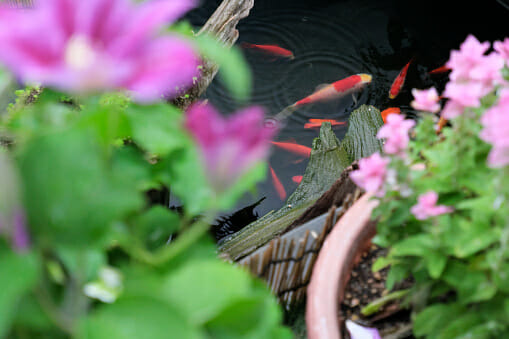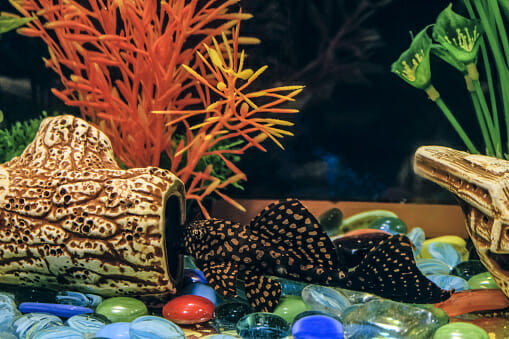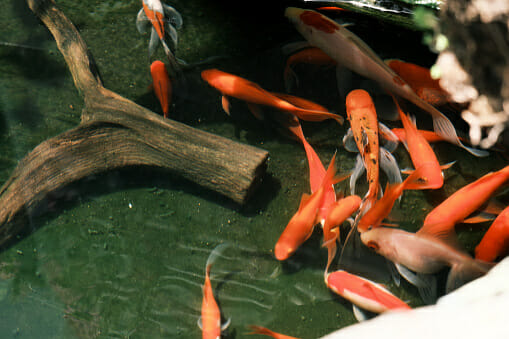How to Make Driftwood Safe for Aquarium
Part of the enjoyment in having an aquarium is being able to decorate it. There’s nothing quite like the feeling that comes with knowing that you are creating an attractive scene for visitors to admire, and a fun and healthy environment for your fish. Having driftwood in your fish aquarium is a beautiful and natural way to decorate, and it’s guaranteed that all of your aquatic creatures will love it. It’s especially satisfying to use drift wood that you found yourself, but there are specific methods you must follow, and precautions you need to take in order to make driftwood safe for your aquarium.
Now purchasing your driftwood at the nearest pet store isn’t a bad idea to save time and energy. The trouble is that it can be costly, and finding a piece that’s the right size and shape for your tank can be a difficult task.
With plenty of driftwood washing ashore at beaches and alongside rivers, many aquarium owners are inspired to collect their own, and they find themselves concerned as to whether this is safe to do or not.
Well, don’t worry, because it’s perfectly fine to use driftwood that you’ve found yourself in your aquarium. There is, however, one catch. It it necessitates a whole lot of preparation and cleaning to make this driftwood safe to use.
This guide will answer your questions and explain everything you should know about make driftwood safe for your aquarium.

Table of Contents
What is Driftwood?
Driftwood is a generic way of referring to any wood that has been in a body of water and then washed up on a shore or riverbank. It’s usually gray in color, perhaps an interesting shape, gnarled and somewhat weatherbeaten, which is why it is so favored as a natural aquarium decoration.
Furthermore, it’s more appropriate than fresh cut wood for placing in an aquarium, because more of the tennis will have leaked out while it was in the water, so it doesn’t take as much time to prepare.
Why Put Driftwood in Your Aquarium?
A large, cunningly molded piece of driftwood can look magnificent in your tank, but it provides many more benefits than mere beauty.
- Fish amusement and safety – An aquarium should have plenty of algae and driftwood to keep your fish happy. They enjoy playing by swimming in and out of the nooks and crannies, and they sometimes feel insecure, and need to be able to hide away somewhere that is a little sheltered until they feel safe again.
- Algae eaters – If you happen to have any algae-eating creatures in your aquarium, driftwood can serve as a great place for them to locate food.
- Bacteria growth – This refers to larger tanks, as colonies of good bacteria can grow, which aids in keeping a healthier and cleaner environment.
- Lowers pH of the water – The tannins leaching from the driftwood will naturally lower the pH of the water. While this isn’t considered a good thing for everyone who owns an aquarium, it can benefit some people. Often fish owners find it necessary to put chemicals in the water to artificially lower the pH.

Kinds of Driftwood That Are Safe
If you want to try gathering up your own driftwood, then you must be aware of which types of wood are safe and which ones are not.
You should have no problems using hardwoods in your tank, but stay away from softwoods. That’s the standard rule. This is because softwoods usually have a lot of resin or sap in them. If this leaches out of the wood and gets into the water, it can lead to problems.
Since pine and other evergreens are softwoods, an excellent rule to follow is to avoid wood from any tree that doesn’t shed it’s leaves or that has cones.
These are some of the woods that are considered unsafe for use in an aquarium:
- Cedar
- Horse chestnut
- Pine
- Cypress
- Lilac
- Grape vine
- Ivy
- Spruce
- Yew
- Walnut
Some of these woods are toxic, others emit sap or other undesirable substances, and some rot too fast.
Can Both Freshwater and Salt Water Tanks Have Driftwood?
There has been considerable debate concerning whether or not it’s safe to ever use driftwood in salt water aquariums.
This is because the tannins that leach from driftwood lower the pH of your water. This isn’t really a problem in freshwater aquariums, but it’s quite different for salt water aquariums. For many people who own salt water aquariums it’s a constant battle to keep the pH of their water at a high enough level. They definitely do not want anything in their tank that’s going to lower the pH level even more. However, if you aren’t experiencing a problem with your pH level, then it is okay to have driftwood in your aquarium even if it is salt water.

How to Prepare Driftwood for Aquarium Use
So now the question is, how do you make driftwood safe for your aquarium?
Now this isn’t something that you have to dread doing. It’s really a very simple procedure, but you absolutely have to do it precisely down to the smallest detail or you run the risk of harming the health and well being of the occupants of your tank.
Cleaning
The first thing you need to do is to thoroughly clean the outside of the piece of driftwood. So you have to get a stiff-bristled brush. You probably already have one around the house, like a vegetable brush for example, and scrub every single inch of your driftwood.
Use hot water, but do not use soap, or any other cleaning products, remember your fish. You don’t want to make them ill or cause them to die.
If any bark remains on the driftwood, remove it, as this is an ideal place for insects to hide out. Also, if there is anything else that needs to be removed, take a pick, or a knife to dig out and scrape it off.
A rather clever method you may want to utilize is to use an air compressor and blast the wood with air to finish cleaning it. Just be careful not to break or damage the wood in the process.
If there are any sharp edges that could injure your fish, be sure and sand them down.
This method of cleaning will eliminate any superficial dirt, however you are far from finished.
Sterilizing
It’s absolutely essential that you correctly sterilize your driftwood before placing it anywhere near your aquarium.
1. Boil driftwood – By doing this you will eliminate most of the bacteria.
a. Look for a pot large enough so that you can completely submerge your piece of wood. This
could turn out to be difficult if you are dealing with an especially large piece of wood, but you
can find a large stock pot which should be the right size.
b. Boil the wood for no less than 2 hours. If you have a very thick or large piece of wood, you
can add an extra hour or longer if you feel it necessary. The heat must seep through to the
middle or else the wood will not be completely sterilized.
It has been further suggested that cleaning the wood using a weak solution of bleach would also be effective, but this is taking a big chance. Should you fail to completely rinse the bleach out, you could end up killing your fish. Moreover, the bleach wouldn’t clean inside, only the exterior, so there would still be the possibility of dangerous bacteria lurking deep inside the wood.
Curing Driftwood
Here you have reached the last step to undertake before your driftwood will be prepared to place in your aquarium.
The purpose of the curing process is to successfully leach out most of the tannins in the wood so that it doesn’t cause the water to become discolored or lower the amount of pH too drastically.
It also serves to thoroughly saturate the wood the result being that it will sink without requiring an anchor.
While curing your driftwood is an easy process, it does take up a lot of time. This is true even though it is essentially a hands-off job.
Simply submerge your wood in a container of water and let it remain there for a period of about 1-2 weeks.
Check the water periodically, and when it is darkened due to the tannins leaching out, empty it and put in fresh water. Continue to do this until the you see that the water has stopped becoming darkened by the release of the tannins.
When you’re satisfied with the color of the water, go ahead and put the wood in the aquarium.
Dos and Don’ts
Do
- Decide where you are going to locate your driftwood before you start the project. If you should put it in the wrong place or need to move it around repeatedly, it could stress out the fish.
- Remove any moss, lichens, or bark
- Enlist the aid of a filter with activated carbon or a chemical filter to help clear up your water if tannins are causing it to be discolored.
- Cure the driftwood until tannins cease to discolor the water, unless this is an effect you like and want it to stay that way.
Don’t
- Choose a piece of driftwood made from softwood for your aquarium.
- Gather driftwood from polluted water
- Use any soap, detergent, or cleaning products when cleaning your wood.
- Eliminate the sterilizing
- Forget to check your pH levels often
. Bake your driftwood. Perhaps you’ve never considered doing this, but be assured that some people have actually tried this method of preparing their driftwood. Now there are ways of baking the driftwood that have been promoted over the Internet, and it might seem like a good idea to you, but absolutely do not do it. Primarily because it is an enormous safety hazard. Ever consider building a campfire in your kitchen. Preposterous, right? Get the idea?
Also, consider this. By baking your wood after you have soaked it, you are basically defeating the purpose of allowing the wood to absorb the water in the first place. This means that you are now back to square one. Use your brain cells and do not do this.
In case you’re just itching to start a project, or perhaps have a specific shape or size of driftwood that you can’t seem to find in any store, then finding your own driftwood can be a good thing. But don’t think that you can get with eliminating any of the steps for properly preparing your driftwood for your aquarium. The process can take a while, and if you aren’t ready to see it through then settle for some aquarium-safe driftwood purchased at your local pet store.
One last thing. Don’t just dive into this project without giving it proper consideration beforehand. When you are considering adding a new addition to your aquarium, whether it be a fish or some type of decor it is important that you think it through before you act. You have to consider whether or not it’s a practical move to make, as well as will this new item be compatible with the setup you already have.
Also, you need to give some thought to maintenance. If you have a lot of solid structures in your aquarium, do you really want to add one more? Sure, your fish will love it, but every solid piece you add only makes cleaning your tank all the harder. This is because there will be more and more things that have to be taken out and cleaned separately. And a huge piece of driftwood in the wrong place can make cleaning the glass of your aquarium more difficult by blocking your way.
When you are just beginning to plan and build your aquarium, that is actually the best time to include a piece of driftwood in the mix. You have the option of putting it basically anywhere you want without having to worry about shape and size. However, we realize that things don’t always work out the way they should, and have tried to provide you with a guide that will make it as easy as possible for you to make driftwood safe for your aquarium.